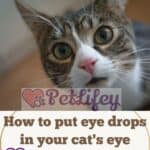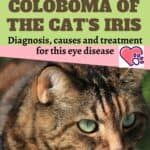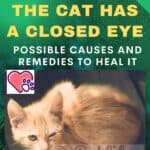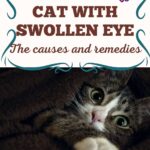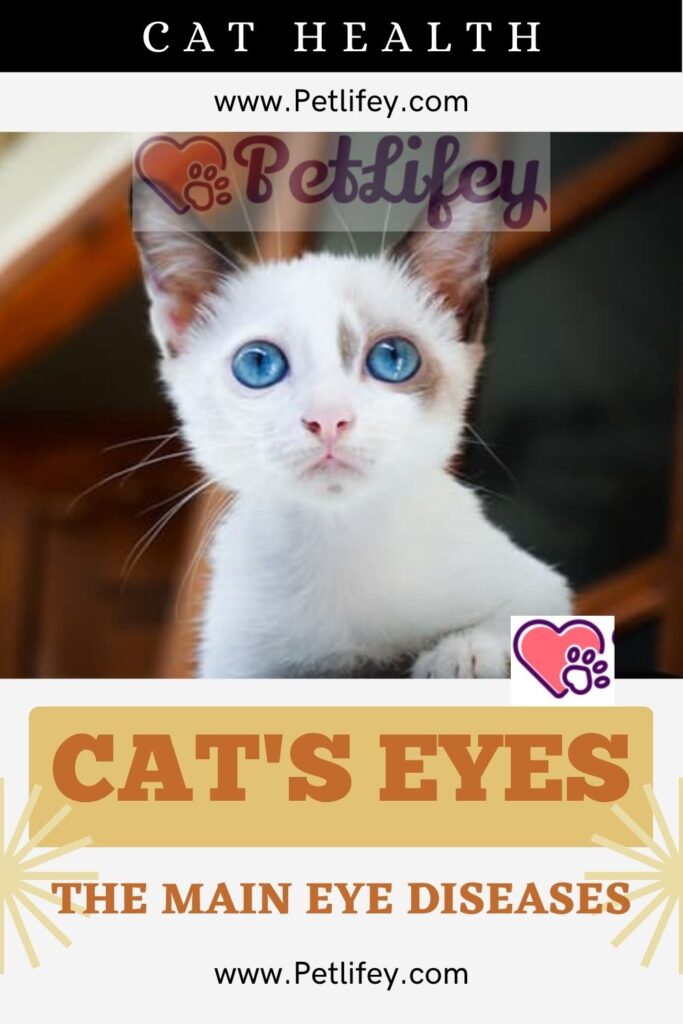
Do you know all the pathologies that can affect your cat’s eyes? Here are the most serious ones and all the most suitable treatments to help our beloved feline.
‘Cat’s eyes’ is not only the title of a famous cartoon from the 80s but it is also the hallmark of our cute four-legged friends. The look of the cat is what characterizes it and makes it so beautiful, but not only. In fact, the cat uses its gaze as if it were a radar to identify prey and dangers even in less than optimal light conditions. Here is a list of all the diseases that can afflict their eyes and what to do to help them heal.
Eye diseases: how to spot them
If we look carefully at a cat’s face we will notice that, in addition to being larger than humans, its eyes also have a different light. Thanks to that shiny carpet, the layer of cells that covers them, which makes them more suitable for seeing even when it is dark. It is important to check that the eye is always ‘clean’ and free of spots, redness and irritation, secretions of various kinds. It is important to maintain proper eye hygiene and, in less serious cases, to help our cat by cleaning his eye with the help of a cotton swab. In short, if we notice that the eyes have lost their luster, it is good to be alert because they could hide an infection.
Eye problems of various kinds
Not only due to pathology, but also other factors can affect the feline gaze and make it less bright than usual. In particular, as also happens for humans, the cat could be subject to blows of air. It could also happen that in the not-so-happy encounter between cats fighting, the feline’s eyes could get involved or abrasive materials could scratch them. In short, there may be various causes of these eye discomfort, so let’s try to recognize them in time.
Eye diseases: what are they
Unlike the problems that can arise due to external factors and which are almost immediately visible to the human eye, here is a complete list of the main diseases that can afflict a cat’s eyes and all the remedies to give them relief.
Conjunctivitis
What causes it? Direct contact with foreign bodies that inflame the eye: purulent crusts are formed, called cisps, which must be cleaned. We notice this thanks to some rather evident symptoms such as: semi-closed eye, swelling, redness, secretions, pain, itching and poor vision. Being an infectious disease it is unlikely that it affects only one of the two eyes: usually the problem affects both of them. It can be caused by blows of air, wounds, abrasions and is also one of the main symptoms of feline viral infectious rhinotracheitis.
Conjunctivitis: how to cure it
Sometimes the mother cat herself takes care of cleaning her cat’s eyes, other times it is necessary for the owner to intervene with chamomile compresses with not too hot water. Alternatively, boric water could also be used but it actually causes burning, although it disinfects better. Under medical advice, eye drops and anti-infectious ointments could be applied for about a week and always according to the veterinarian’s instructions. If, on the other hand, it is an allergic type of conjunctivitis, it is advisable to proceed with an anti-inflammatory treatment.
Ulcerative keratitis
Also called corneal ulcer, it presents with rather annoying symptoms such as: continuous itching, spasmodic movements of the eyeballs, swollen cornea and fall of the third eyelid. Generally, once the diagnosis has been identified, the veterinarian prescribes the most suitable antibiotics.
Glaucoma
It is a very serious disease since, if not recognized in time, it can also lead to blindness and partial or total loss of the eye. It is a problem of excessive blood pressure inside the eyeball and usually brings with it other symptoms, such as headache and a strong intolerance to light sources. There are some cat breeds particularly prone to this pathology, namely the Persian, the Burmese and the Siamese. If you have one of these cats at home, a few more visits to the vet are worthwhile.
Glaucoma: cure
Medicines are needed to lower the pressure level inside the eye, other times it is advisable to intervene surgically. It is certainly important to consult the expert’s opinion immediately and hope that that particular type of glaucoma does not lead to blindness or that at least one of the two eyes is able to be saved.
Uveitis
It is one of the main symptoms of FIP, IVF and toxoplasmosis. Like glaucoma it is very dangerous because it can lead to blindness but it is also just as painful. The term ‘uveitis’ refers to the size that the pupil can take and which, even to the touch, looks similar to a grape.
Uveitis: cure
In addition to using eye drops with steroid anti-inflammatory corticoids, uveitis can be treated with methylprednisolone injections. At other times, surgery on an antibiotic basis may be necessary. In the meantime, to relieve our cat’s discomfort and pain, we can use analgesics.
Keratitis and cataracts
They are inflammations of the cornea that prevent the cat from seeing well: the sight is blurred and we can notice it given the slowness of its movements and its uncertainty in walking. Precisely because he can’t see where he puts his paws! The only way to resolve cataracts is surgery, in the worst cases, or try a first cure of potassium iodide eye drops. It is important not to confuse it with nuclear sclerosis, which involves the formation of a blue veil in front of the eyes. This is usually an aging cat problem that is impossible to cure.
Kitten eye diseases

If a tender kitten of a few months is affected, then the main risk is that it has been affected by infectious ophthalmitis. One of the most obvious symptoms is serum leaking from the eyes. The best way to cure it is with washes and packs, if of course the disease is not in an advanced state. Otherwise it is necessary, always under the advice of the veterinarian, a treatment of antibiotics that he himself will have to prescribe. Another problem that can affect the kitten’s vision is the occlusion of the tear duct, evident due to continuous and excessive tearing. It is often accompanied by a sign, a black streak next to the nose. The best thing to do is to book a visit to the vet as soon as possible.

